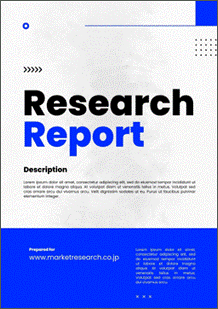 | • レポートコード:MRC2106A361 • 出版社/出版日:Mordor Intelligence / 2021年5月30日 • レポート形態:英文、PDF、110ページ • 納品方法:Eメール(受注後2-3営業日) • 産業分類:食品・飲料 |
| Single User | ¥629,000 (USD4,250) | ▷ お問い合わせ |
| Team User | ¥703,000 (USD4,750) | ▷ お問い合わせ |
| Corporate License | ¥1,110,000 (USD7,500) | ▷ お問い合わせ |
• お支払方法:銀行振込(納品後、ご請求書送付)
レポート概要
| 本調査資料は、世界の乳児食市場について調査し、イントロダクション、調査手法、エグゼクティブサマリー、市場動向、カテゴリー別(オーガニック、従来型)分析、種類別(調乳、乾燥離乳食、インスタント離乳食、その他)分析、流通チャンネル別(ドラッグストア・薬局、スーパーマーケット・ハイパーマーケット、コンビニエンスストア、オンライン小売、その他)分析、地域別分析、競争状況、市場機会/将来の見通し、新型コロナウイルス感染症の影響などを掲載しています。 ・イントロダクション ・調査手法 ・エグゼクティブサマリー ・市場動向 ・世界の乳児食市場規模:カテゴリー別(オーガニック、従来型) ・世界の乳児食市場規模:種類別(調乳、乾燥離乳食、インスタント離乳食、その他) ・世界の乳児食市場規模:流通チャンネル別(ドラッグストア・薬局、スーパーマーケット・ハイパーマーケット、コンビニエンスストア、オンライン小売、その他) ・世界の乳児食市場規模:地域別 ・競争状況 ・市場機会/将来の見通し ・新型コロナウイルス感染症の影響 |
The global baby food market was valued at USD 77.85 billion and the market is projected to register a CAGR of 3.67% during the forecast period (2021-2026).
During the COVID-19 pandemic, baby food was tagged as an essential good, and as main retail distribution channels were permitted to remain open, stockpiling drove significant increases in retail sales. Though the above trend was observed in both developed and developing economies, slower growth has been observed in the latter which can be attributed to supply chain disruption and consumers spending less during the economic fallout.
Growth is expected in the market amid a flurry of innovation with key ingredients such as human milk oligosaccharides (HMOs) and probiotics. Over the long term, manufacturers are expected to develop products that support the immune system from infancy.
Concerning infant nutrition, parents demand the highest safety and quality standards. Key players in the market are also constantly reformulating products to make them more appealing to both parents and infants. This coupled with the rising population of working women and the organized retail market, especially in developing economies is expected to drive the growth of the market over the forecast period.
Key Market Trends
Increasing Demand for Organic Baby Food
The rising number of malnutrition cases and health concerns for the overall growth of the babies represent the key factors driving the global organic baby food market. Improved economic conditions have resulted in increased expenditure by the parents. Therefore, they are willing to spend on high-quality and expensive products for the wellness of their babies. Also, organic baby food prevents the presence of any kind of pesticides in the baby’s system as it is made of fruits and vegetables that are not sprayed with chemical pesticides, and meat from animals that are not given antibiotics or growth hormones. It also does not contain any artificial flavors, preservatives or colors. Furthermore, urbanization and the growing working population, especially women, has encouraged convenience-oriented lifestyles, which is increasing the demand for organic baby food globally and subsequently increasing the sales of baby food.
Asia-Pacific Holds the Major Share in the Baby Food Market
The Asia-Pacific region holds a very significant share in the baby food market. It is both the largest and the fastest-growing region globally. It is expected to be very dynamic in the coming years, owing to its growing population, hectic lifestyles, and rising consumer spending. China is the largest market in the region, which along with developing economies like India and Indonesia are expected to drive the growth of the market in the region.
Rising penetration of modern retail and awareness of the products, combined with rising disposable incomes and purchasing power, are few key factors influencing the growth of the baby food market in the region. Non-Grocery specialist retailers such as drugstores/ pharmacies have been observed to be the preferred channel for consumers in the region and online channels the fastest-growing.
Competitive Landscape
The global market for baby food is competitive, owing to the presence of large regional and domestic players in different countries. Emphasis is given on the merger, expansion, acquisition, and partnership of the companies along with new product development as strategic approaches adopted by the leading companies to boost their brand presence among consumers. Few of the leading companies in the baby food market are Nestlé S.A., Danone S.A., Reckitt Benckiser Group plc, Abbott Laboratories, Feihe International Inc, Royal FrieslandCampina N.V., Shijiazhuang Junlebao Dairy Co., Ltd., Ausnutria Dairy Corporation Ltd, Yili Group, and The Kraft Heinz Company.
Reasons to Purchase this report:
– The market estimate (ME) sheet in Excel format
– 3 months of analyst support
1 INTRODUCTION
1.1 Study Assumptions and Market Definition
1.2 Scope of the Study
2 RESEARCH METHODOLOGY
3 EXECUTIVE SUMMARY
4 MARKET DYNAMICS
4.1 Market Drivers
4.2 Market Restraints
4.3 Porter’s Five Forces Analysis
4.3.1 Threat of New Entrants
4.3.2 Bargaining Power of Buyers/Consumers
4.3.3 Bargaining Power of Suppliers
4.3.4 Threat of Substitute Products
4.3.5 Intensity of Competitive Rivalry
5 MARKET SEGMENTATION
5.1 By Category
5.1.1 Organic
5.1.2 Conventional
5.2 By Type
5.2.1 Milk Formula
5.2.2 Dried Baby Food
5.2.3 Ready to Feed Baby Food
5.2.4 Others
5.3 By Distribution Channel
5.3.1 Drugstores/ Pharmacies
5.3.2 Supermarket/ Hypermarket
5.3.3 Convenience Stores
5.3.4 Online Channels
5.3.5 Others
5.4 Geography
5.4.1 North America
5.4.1.1 United States
5.4.1.2 Canada
5.4.1.3 Mexico
5.4.1.4 Rest of North America
5.4.2 Europe
5.4.2.1 United Kingdom
5.4.2.2 Germany
5.4.2.3 Spain
5.4.2.4 France
5.4.2.5 Italy
5.4.2.6 Russia
5.4.2.7 Rest of Europe
5.4.3 Asia-Pacific
5.4.3.1 China
5.4.3.2 Japan
5.4.3.3 India
5.4.3.4 Australia
5.4.3.5 Rest of Asia-Pacific
5.4.4 South America
5.4.4.1 Brazil
5.4.4.2 Argentina
5.4.4.3 Rest of South America
5.4.5 Middle East and Africa
5.4.5.1 South Africa
5.4.5.2 Saudi Arabia
5.4.5.3 Rest of Middle East and Africa
6 COMPETITIVE LANDSCAPE
6.1 Most Active Companies
6.2 Most Adopted Strategies
6.3 Market Share Analysis
6.4 Company Profiles
6.4.1 Nestle S.A
6.4.2 Danone S.A.
6.4.3 Reckitt Benckiser Group plc
6.4.4 Abbott Laboratories
6.4.5 Feihe International Inc
6.4.6 Royal FrieslandCampina N.V.
6.4.7 Shijiazhuang Junlebao Dairy Co., Ltd.
6.4.8 Ausnutria Dairy Corporation Ltd
6.4.9 Yili Group
6.4.10 The Kraft Heinz Company
7 MARKET OPPORTUNITIES AND FUTURE TRENDS
8 IMPACT OF COVID-19 ON THE MARKET